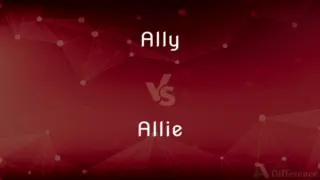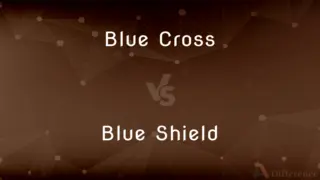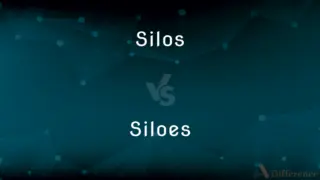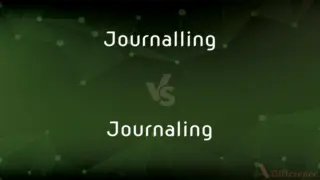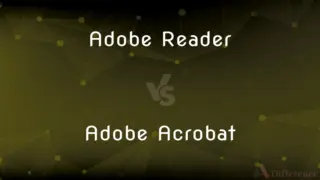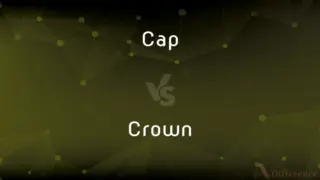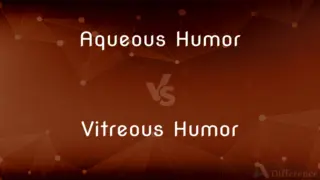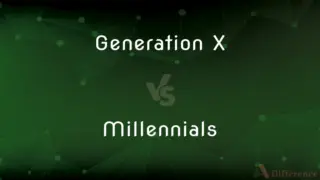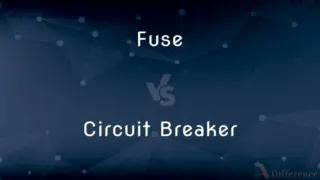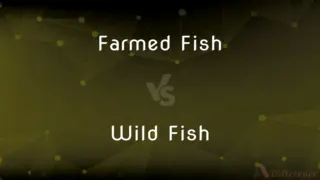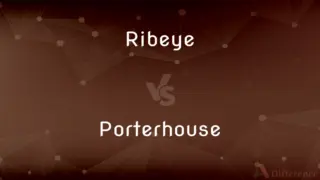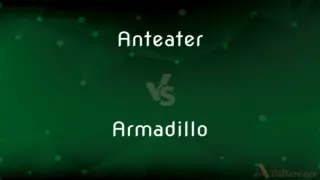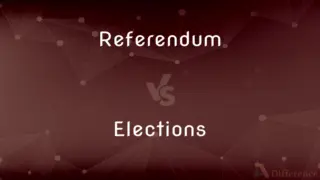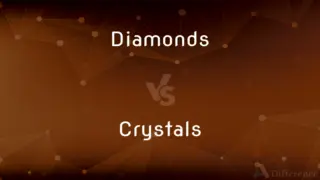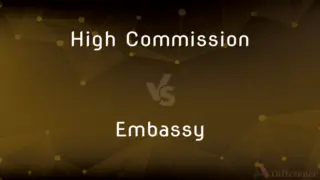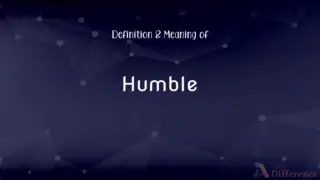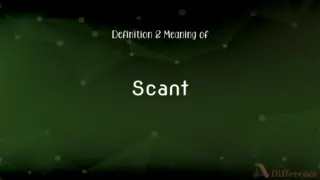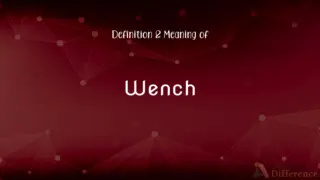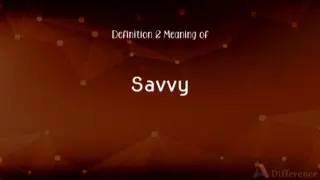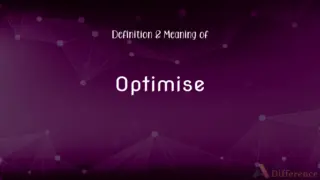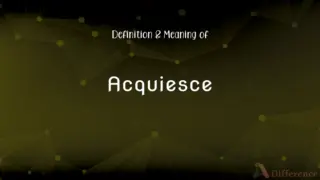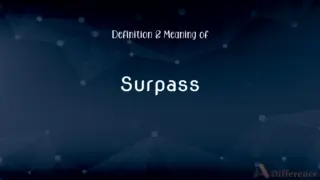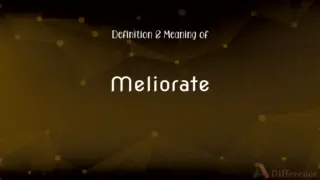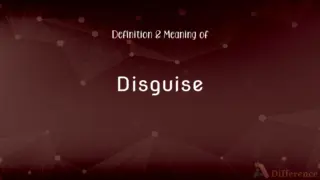Modern Art vs. Postmodern Art — What's the Difference?
By Maham Liaqat & Fiza Rafique — Published on November 28, 2024
Modern art focuses on abstraction and experimentation in the early to mid-20th century, emphasizing innovation. Postmodern art, emerging in the late 20th century, embraces irony, parody, and a questioning of artistic conventions.

Difference Between Modern Art and Postmodern Art
Table of Contents
ADVERTISEMENT
Key Differences
Modern art represents a period of exploration and innovation in the arts from the late 19th to the mid-20th century, aiming to break away from traditional forms and techniques. It includes movements such as Impressionism, Expressionism, and Cubism, which sought to capture the essence of the modern world through abstraction, emphasizing the importance of the artist's perspective and technique.
Postmodern art, on the other hand, emerged in the late 20th century as a reaction against the principles of modernism. It is characterized by a diverse range of styles and a return to narrative and figurative representation. Postmodern artists often employ irony, parody, and pastiche, questioning the boundaries between high and low art and challenging the notion of originality.
While modern art was driven by a desire to depict the visual and existential experiences of the modern world, postmodern art moves beyond the visual to include conceptual ideas. It often involves a more playful and critical approach to art-making, incorporating multimedia, technology, and performance art to explore the complexity of contemporary life.
Modern art sought to express the uniqueness and purity of the artistic medium, with artists dedicated to exploring the possibilities of paint on canvas or the sculptural form itself. This led to a focus on abstract art, where the subject matter was secondary to the exploration of form, color, and line. In contrast, postmodern art blurs the boundaries between different media and disciplines, incorporating a wide range of techniques and materials. Artists like Jeff Koons and Cindy Sherman use photography, installation, and digital media to comment on social, political, and cultural issues, reflecting the fragmented nature of contemporary experience.
The role of the viewer also differs significantly between the two periods. In modern art, the viewer is often expected to appreciate the aesthetic and technical aspects of the work, with a focus on the artist's intent. Postmodern art, however, actively involves the viewer, requiring them to question and interpret the layers of meaning, often without a single, definitive interpretation.
ADVERTISEMENT
Comparison Chart
Time Period
Late 19th century to mid-20th century
Late 20th century to present
Key Features
Abstraction, experimentation, focus on medium and technique
Irony, parody, pastiche, questioning of conventions
Themes
Industrialization, innovation, existentialism
Consumerism, media saturation, identity
Techniques
Abstract expressionism, cubism, minimalism
Mixed media, digital art, performance art
Artist's Role
Innovator, focused on medium purity
Critic, blurring boundaries between art forms
Viewer's Role
Appreciate form and technique
Actively interpret and question
Example Movements
Impressionism, Cubism, Surrealism
Conceptual art, Feminist art, Digital art
Representation
Abstract, focusing on essence over depiction
Often includes figurative, narrative elements
Compare with Definitions
Modern Art
Artistic works produced during the period extending roughly from the 1860s to the 1970s, emphasizing innovation and abstraction.
Picasso's Cubist paintings revolutionized the visual arts.
Postmodern Art
Incorporates a mix of media and techniques, including digital technology.
Nam June Paik's video art blends technology and artistic expression.
Modern Art
Often reflects the rapid changes in society, technology, and culture.
The Futurists glorified the dynamism of the machine age.
Postmodern Art
Seeks to involve and challenge the viewer's perception and interpretation.
Cindy Sherman's Untitled Film Stills explore the construction of identity.
Modern Art
Seeks to break away from classical and traditional forms.
Duchamp's ready-mades challenged the definition of art itself.
Postmodern Art
A diverse set of artistic styles and concepts that emerged in the late 20th century, challenging modernist ideals.
Jeff Koons' works explore consumer culture through irony.
Modern Art
Emphasizes the emotional and psychological expression.
Edvard Munch's The Scream captures existential angst.
Postmodern Art
Embraces the idea of pastiche and parody to question artistic originality.
Sherrie Levine's re-photographs question authorship and authenticity.
Modern Art
Focuses on the use of color, form, and non-traditional materials.
Jackson Pollock's drip paintings exemplify the emphasis on artistic process.
Postmodern Art
Often engages with social and political issues directly.
Barbara Kruger's text-based works critique power and identity.
Common Curiosities
What impact did modern art have on society?
Modern art had a profound impact by challenging traditional views on art and aesthetics, encouraging innovation, and reflecting the rapid changes in society, technology, and culture of its time.
Are there still new developments in modern and postmodern art?
Yes, both fields continue to evolve, with artists building upon and reacting to the legacies of modern and postmodern art, exploring new ideas and technologies.
Why did postmodern art emerge?
Postmodern art emerged as a reaction to the perceived limitations and elitism of modern art, seeking to democratize art by incorporating diverse perspectives and questioning established narratives.
Can an artwork be both modern and postmodern?
While an artwork might exhibit characteristics of both, it is typically categorized by the predominant philosophy and aesthetic it adheres to, based on the artist's intent and the cultural context.
What defines modern art?
Modern art is defined by its experimental approach and emphasis on abstraction, breaking away from traditional aesthetics to explore new ways of seeing and representing the world.
How do postmodern artists engage with their audience?
Postmodern artists engage their audience by involving them in the interpretation of the work, often requiring active participation or presenting works that challenge the viewer's preconceptions and expectations.
How is postmodern art different from modern art?
Postmodern art differs in its embrace of irony, pastiche, and a questioning of the conventions established by modern art, focusing on the complexity of contemporary society and challenging the notion of the artist's originality.
What role does technology play in postmodern art?
Technology plays a significant role in postmodern art as a tool and medium for creation, allowing artists to explore new forms of expression and engage with themes of media saturation and digital culture.
How has the perception of modern and postmodern art changed over time?
The perception of both modern and postmodern art continues to evolve, with critical and public reception varying widely over time as cultural contexts and artistic priorities shift.
How do museums and galleries differentiate between modern and postmodern art?
Museums and galleries often differentiate based on the period, philosophy, and stylistic characteristics of the works, organizing exhibitions that reflect the distinct approaches and themes of each era.
Share Your Discovery
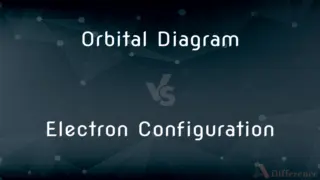
Previous Comparison
Orbital Diagram vs. Electron Configuration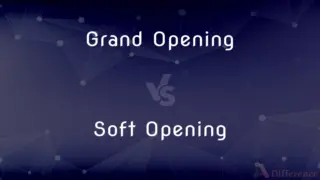
Next Comparison
Grand Opening vs. Soft OpeningAuthor Spotlight
Written by
Maham LiaqatCo-written by
Fiza RafiqueFiza Rafique is a skilled content writer at AskDifference.com, where she meticulously refines and enhances written pieces. Drawing from her vast editorial expertise, Fiza ensures clarity, accuracy, and precision in every article. Passionate about language, she continually seeks to elevate the quality of content for readers worldwide.





